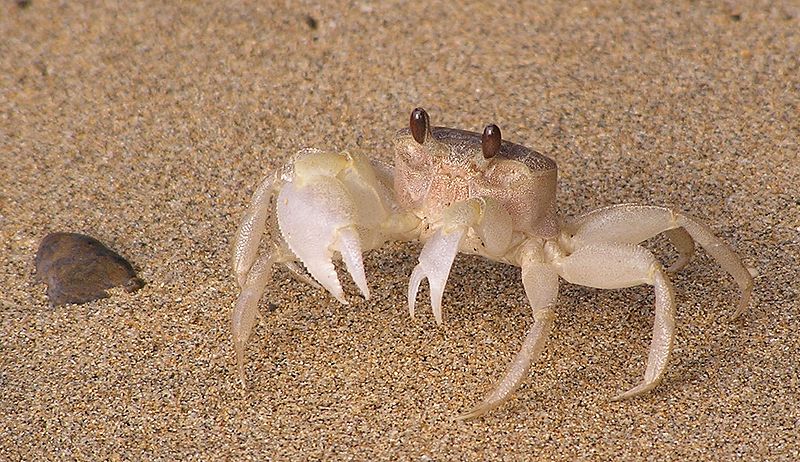Take a look at this guy. Isn’t he a cutie? Especially for the most ferocious predator in the sandy beach habitat?
He’s called a ghost crab. They’re called that because they’re exactly the color of the sand, they come out at twilight, and they run swiftly across the beach and disappear into a burrow before you can figure out if you’re hallucinating. I once spent a semi-drunken evening dashing around a beach trying to see if I could catch one (these guys live where the tequila flows). I never even came close. It’s estimated they can move at up to 20 miles per hour.
Being crabs, they’re multi-talented. They are opportunists, thieves, scavengers and scoundrels, and they will eat anything that moves, and several things that don’t anymore. They are quick enough to snatch flying insects from the air, and mean enough to kill and eat shorebirds, which is pretty impressive, because they only get about as big as the palm of your hand. They are a problem for endangered plovers, which nest on the sand and have to be constantly defending their chicks from these things.
They did studies and found that when they run with that incredible speed, they have three distinct gaits, just like a horse or a dog does: a walk, a trot and a gallop, and they have speed thresholds where they have to break into the next one. The physics of it all is very similar to what you see in those mammals. This amazed scientists, because of course crabs evolved from a radically different background than mammals—and for that matter, have a radically different number of legs, and for that matter move sideways instead of forward. But the physical laws of locomotion apparently don’t change, and it ended up being what scientists call convergent evolution, in which two species independently evolve the same solution to a problem. (Other examples: seals and fast fish are shaped the same; bats and birds both fly.)
Those eyes can see 360 degrees, but cannot see straight up, leaving them vulnerable to bird attack. To run around out of the water, they, like most shore crabs, fill their gill chambers with water, somewhat like a scuba diver filling a tank with air. Periodically they have to take a dip and replenish it. But they’re able to keep their expenses low when they have to: when they hibernate, they go for six months without breathing at all.
Now you know.

